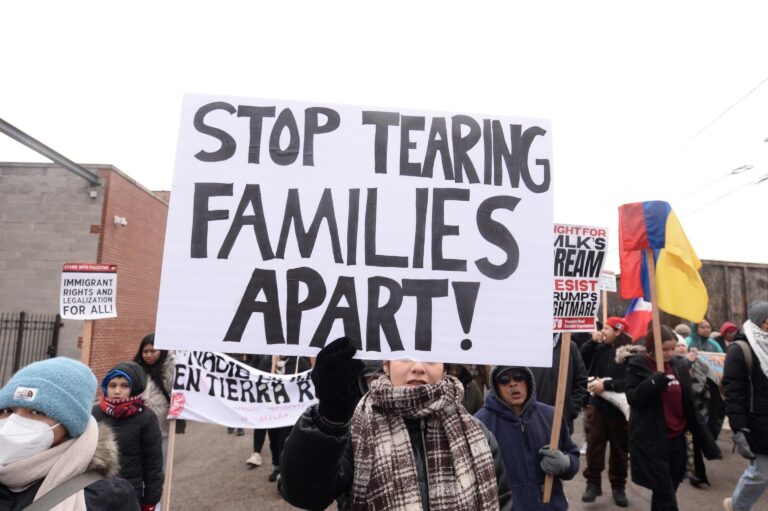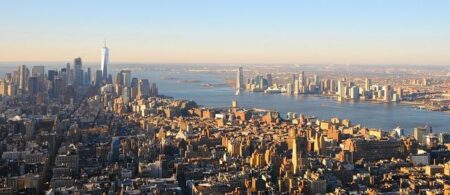Widespread Demonstrations Challenge Trump-Era Immigration Enforcement Across U.S. Cities
In recent weeks, numerous protests have ignited in Los Angeles and other prominent urban centers nationwide, fueled by opposition to the stringent immigration enforcement policies enacted during former President Donald Trump’s tenure. Participants in these rallies express strong disapproval of measures they believe disproportionately target immigrant populations,fostering fear and social fragmentation. This article delves into the origins of these protests, the core demands of activists, governmental reactions, and the broader consequences for immigration policy and community cohesion in America.
Origins and Driving Forces Behind the Demonstrations
The surge in protests across major metropolitan areas,including Los Angeles,reflects mounting resistance to the administration’s hardline immigration stance. At the heart of these mobilizations lies concern over the humanitarian toll of intensified immigration crackdowns, which many argue unfairly impact marginalized groups. Advocates and civil liberties organizations have raised alarms about the separation of families, a sharp rise in deportations, and prolonged detentions in immigration centers—actions they contend violate fundamental human rights.
These protests are supported by a broad alliance of stakeholders united by shared apprehensions, such as:
- Immigrant advocacy groups providing legal assistance and rights protection.
- Religious organizations promoting sanctuary and compassion.
- Local policymakers resisting federal policy overreach.
- Immigrant households confronting the trauma caused by enforcement tactics.
Collectively, these groups emphasize that the enforcement approach fails to address the underlying causes of immigration challenges and instead exacerbates social and economic strains within affected communities.
| Primary Concerns | Illustrative Examples |
|---|---|
| Family Separation | Over 5,000 children separated at the border in recent years |
| Escalated Deportations | Approximately 35% increase compared to the previous administration |
| Lengthy Detentions | Criticism of private detention facilities’ conditions |
| Community Anxiety | Decline in workforce participation in immigrant-heavy neighborhoods |
Effects on Urban Communities and Municipal Responses
The wave of protests sweeping through Los Angeles and other cities has placed local communities in a complex position.Many residents express solidarity with the demonstrators’ cause while concurrently voicing concerns about public safety and economic disruptions. Businesses situated near protest venues have reported diminished customer traffic due to street closures and increased security measures in response to occasional unrest. In response, community leaders have initiated forums aimed at fostering dialogue among activists, law enforcement, and city officials to promote peaceful resolutions and prevent escalation.
City administrations have adopted multifaceted strategies to uphold civil rights while maintaining order,including:
- Deploying specialized police units trained in de-escalation and crowd management
- Establishing designated zones for protests to enable peaceful demonstrations with minimal disruption
- Enhancing dialogue channels with community groups to swiftly address tensions
- Launching public awareness campaigns underscoring the importance of respecting both protest rights and community safety
| City | Community Initiatives | Municipal Actions |
|---|---|---|
| Los Angeles | Community forums and cultural celebrations | Designated protest areas and increased law enforcement presence |
| San Francisco | Volunteer legal support for demonstrators | Real-time updates via social media platforms |
| Chicago | Interfaith dialogue coalitions | Traffic diversions and public safety briefings |
Evaluating Trump Administration’s Immigration Enforcement Policies
The Trump administration’s immigration enforcement policies represented a notably stringent approach,considerably altering the nation’s handling of border security and undocumented migrants. Central to this approach was the “zero-tolerance” policy, which mandated prosecution of all illegal border crossings, leading to widespread family separations and increased detention rates. Critics highlight the resulting humanitarian crises within detention centers,citing overcrowding and inadequate resources.
Key components of these policies included:
- Strengthened partnerships between local law enforcement and federal immigration agencies through programs like 287(g)
- Broadened deportation priorities encompassing a wider range of undocumented individuals, irrespective of criminal records
- Implementation of the “Remain in Mexico” policy, requiring asylum seekers to await processing outside U.S. territory
| Policy Aspect | Consequences | Controversies |
|---|---|---|
| Family Separation | Thousands of children separated from parents | Widespread international condemnation |
| 287(g) Agreements | Increased collaboration between local and federal agencies | Allegations of racial profiling and civil rights violations |
| Remain in Mexico | Backlogs in asylum processing | Unsafe conditions for asylum seekers in border regions |
Promoting Peaceful Advocacy and Strengthening Community Bonds
In the face of heightened tensions surrounding immigration enforcement, a steadfast commitment to peaceful activism remains crucial. Protesters can amplify their influence by organizing nonviolent marches, sit-ins, and community conversations that encourage empathy and mutual understanding. Transparent communication regarding movement objectives helps sustain focus and credibility. Additionally, responsible use of social media to provide timely updates combats misinformation that frequently enough clouds public perception.
Collaborating with local officials, faith-based groups, and civic organizations fosters collective problem-solving and fortifies community resilience. Key tactics employed by activists include:
- Informational workshops educating residents on immigration laws and individual rights
- Community resource fairs offering legal assistance and social support services
- Voter registration campaigns aimed at increasing political engagement among underrepresented groups
- Interfaith alliances presenting a unified humanitarian stance
| Approach | Objective | Outcome |
|---|---|---|
| Nonviolent Marches | Raise public consciousness | Extensive media attention and community solidarity |
| Educational Workshops | Empower citizens with knowledge of rights | Increased community empowerment |
| Interfaith Coalitions | Build broad-based support | Enhanced political influence and unity |
Conclusion: Navigating the Future of Immigration Discourse
As protests persist in Los Angeles and other key cities, the opposition to Trump-era immigration enforcement policies underscores profound societal divisions and ongoing debates about immigration in the United States. Stakeholders—including community leaders, policymakers, and activists—are closely monitoring developments, recognizing that these events are pivotal to the national dialogue on immigration reform and civil rights protections. The situation remains dynamic, with collaborative efforts poised to shape the trajectory of immigration policy and community relations in the coming months.




